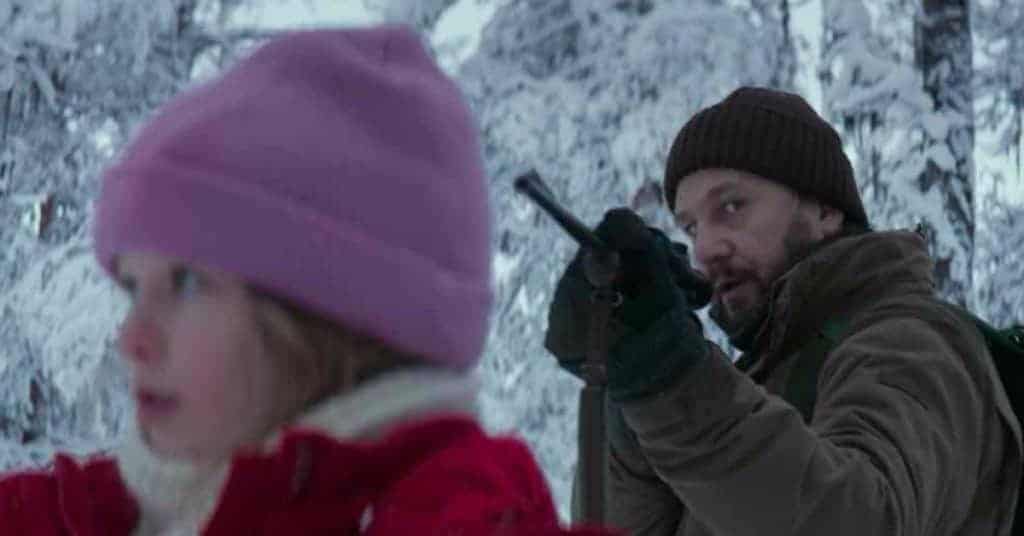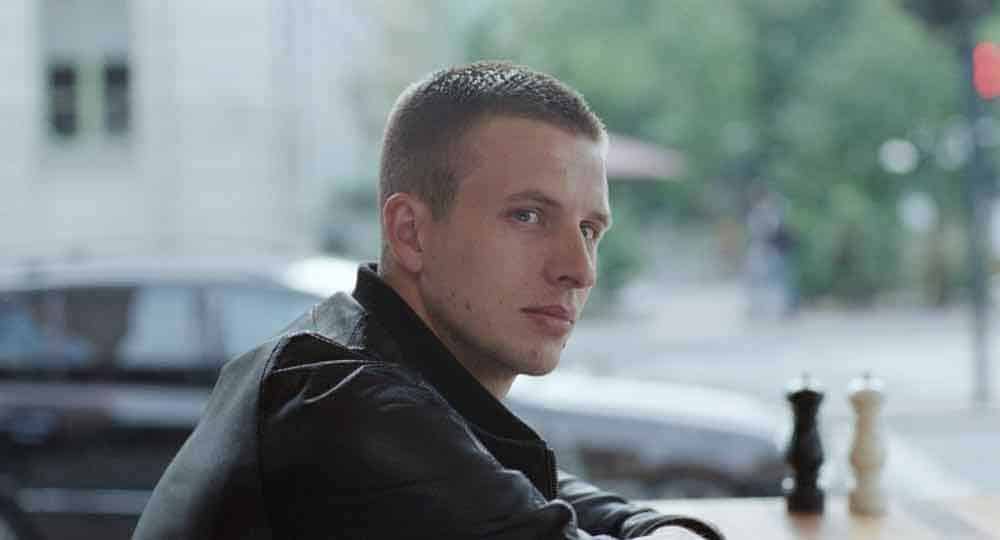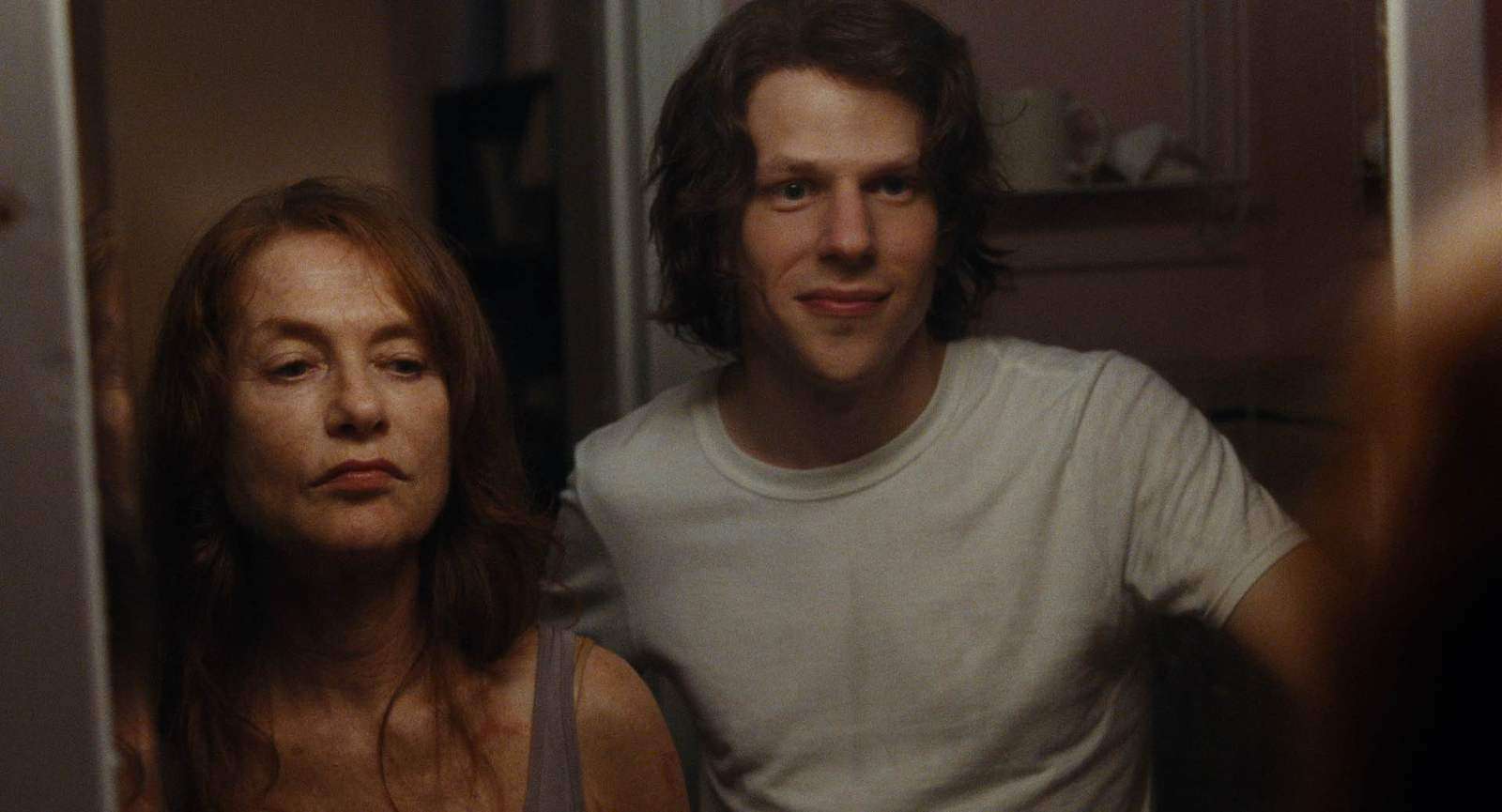Although it is his first foray into genre, Thelma is a continuation of director Joachim Trier’s signature ‘dirty formalism’, and further explores the themes of family dysfunction found in his previous work. This is the fourth feature in our Special Issue on Thelma. Read the rest of the issue here.

Now that we’ve made the genre film with the more flashy style, it’s easy to say that the movies before were kind of naturalist and realist, and this is completely different. But actually, it’s not.” – Eskil Vogt
In a wide shot from afar, a father and his young daughter walk across an icy lake. The distance between the pair and the camera renders them as two tiny figures in a wide expanse of nature. They pause for a moment as the girl watches a pair of fish swimming under the ice. In the snow-covered forest, the father unslings his gun and silently aims it at a doe. As the girl watches the doe, oblivious, he slowly turns and points his rifle at his young daughter’s head.
That’s the first scene in Thelma, Norwegian director Joachim Trier’s first foray into genre cinema. The scene unsettles us: every time we think we understand what’s happening, it shifts. It’s a prime example of what Trier calls “dirty formalism”, mixing cinematic styles and ideas, smashing them against each other — trying things out. We know we’re in a film about a father and daughter, but why is there a macro shot of fish moving beneath the ice? What could possibly cause him to point his gun at her? Add the moody, eerie score, and we’re clearly not in a straight family drama. Yet nothing bad actually happens, so we’re not quite in traditional horror territory either.
Read about the original of the term ‘dirty formalism’
Joachim Trier defines ‘dirty formalism’ for us in our interview on Louder Than Bombs.
Trier’s first three films — Reprise (2008), Oslo, August 31st (2011), and Louder Than Bombs (2015) — were all naturalistic dramas centred around male protagonists dealing with depression, ambition, and dysfunctional families. Even in these realist films, Trier’s style was experimental — essayistic, montage-driven, and full of novel-like tangents — all in the service of depicting characters’ subjectivity and inner lives. Thelma seems like new territory for Trier: it’s about a young woman with a repressive family and mysterious telekinetic powers. It owes a lot to horror classics like Carrie, but is just as invested in psychological truth as Trier’s previous films. Trier’s opening, signals we’re entering somewhat new stylistic territory, a world of allegory and the not-quite-natural. But by keeping his characters together at the centre of the frame, showing us how they relate to one another, Trier hews close to his realist roots.
Even before Thelma, Trier’s films were defined by the juxtaposition of vivid emotional realism with experimental, fantastical, non-naturalistic cinematic techniques. This is part of what Trier means by ‘dirty formalism’. The opening of Reprise is a comedic tangent, a what-might-have-been story. Even once the plot gets going, Reprise uses digressions to disguise plot development. With its linear plot structure and single protagonist, Oslo, August 31st may seem to be the most straightforward film Trier and co-writer Eskil Vogt have made. But it is as much the story of a city as it is a portrait of suicidal recovering drug addict Anders on what might be his last day. Anders is both the subject of a character study and the vessel through which Trier introduces us to other characters and views of the city.
[clickToTweet tweet=”Trier’s films juxtapose emotional realism with experimental cinematic techniques. ” quote=”Trier’s films juxtapose emotional realism with experimental cinematic techniques. “]
Trier’s most experimental film to date is Louder Than Bombs, the story of a grieving family. Louder takes “dirty formalism” to an extreme. This psychologically insightful family drama about two brothers (and their father) coping with the death of their mother features multiple points of view, dream sequences, flashbacks, and voiceovers. But it still finds the time for an iconic sequence of cheerleaders seemingly flying into the air against a blue sky background. Trier shows us the cheerleaders as the antisocial, teenaged Conrad (Devin Druid) sees them: they’re angelic, almost surreally vivid creatures, the sight of which offers him an escape from the doldrums. Because Conrad spends his time on his computer, Trier can only give us access to Conrad’s inner life through his interactions in the video games he plays, and the diary entry he writes. When his brother, Jonah (Jesse Eiseinberg), reads out the diary, Trier sets his words to a glorious montage of images.
We thought this film would be more stylized: we’re making a magic, supernatural movie. The script itself was based on all these visual cues and ideas. But in the end, it became a portrait of a young woman, a very real and naturalistic portrait.” – Jakob Ihre
As a genre film, Thelma allowed Trier and his team the freedom to make an even more stylized film. Trier’s writing process with Vogt began with images — windows, water, birds, and nature — instead of characters and themes. With cinematographer Jakob Ihre, Trier decided to use anamorphic lenses instead of the more naturalistic spherical lenses of his earlier films.
Yet that stylization only went so far. Trier began Thelma with films like Suspiria on his mind, but heightened near-surrealism never felt right or appropriate for a portrait of a young woman and her father. Even in this supernatural world, Trier and his team foregrounded emotional realism. Trier’s established style is already so experimental; he could only push the genre elements so far without losing all ties to reality.
Thematically and tonally, Thelma has most in common with Oslo, August 31st: both films alternate between closeness to the protagonist, for empathy, and distance, for a more objective perspective. In Oslo, August 31st, Trier uses subjective sound and editing to put us in the suicidal Anders’ (Anders Danielsen Lie) alienated perspective, but regularly interrupts this immersion so we see what Anders can’t. When Anders sits in a café, eavesdropping on the conversations around him, the chatter shifts in and out of focus with Anders’ attention, as do the speakers’ images in the frame. Trier’s sound and framing mirror Anders’ acute awareness that he has nobody to talk to and does not share his neighbours’ optimism about the future. But Anders’ situation isn’t as hopeless as he believes: his former friends confide in him that they, too, experience alienation; Anders’ is just more extreme. When Anders broaches the topic of his intended suicide with a friend, Trier keeps us at distance, shooting much of their conversation in a wide shot of both men from afar. It forces us to consider whether Anders’ bleak outlook is warranted.

In Thelma, this distancing, objective perspective is even more extreme, using what Trier calls the “gaze from another place”. The first time we see Thelma (Eili Harboe) as an adult is from a crane shot high above the courtyard at the University of Oslo. Students scuttle across the frame like ants; Thelma doesn’t even enter the frame until we’ve been watching for a few seconds, and it takes time for the camera to zoom in and find her. Trier repeats shots of Thelma as just one indistinguishable member in a large group: at her study desk in the library, by the window to her apartment on the building façade, at her seat in a full classroom, in a church at prayer. Thelma feels lost in the crowd. It’s only as the plot moves forward that Thelma begins to understand and explore her individuality. Equally, Trier wants us to feel Thelma’s relative insignificance compared to the world, and perhaps a higher being: her powers don’t single her out as important so much as they are merely a fact of nature and life.
I’m very drawn to the big drama that all humans have to deal with, which is becoming an autonomous human being, which is almost impossible.” – Joachim Trier
Trier’s first three films all experiment with voice-over to provide a window into the main characters’ minds. That tendency to experiment is part of the ‘dirty formalism’ approach. In Reprise, a third person limited narrator tells us what the dual protagonists are thinking. Oslo, August 31st uses voice-over to develop a collective consciousness of the city of Oslo. It opens with a montage of anonymous voice-overs about life in Oslo, each using the phrase “I remember”; later in the film, Anders uses the same format to reflect on his own past, establishing himself as part of this tapestry of the city. In Louder Than Bombs, the voices heard in voice-over could be speaking someone else’s words, establishing mixed or shared subjectivity.
Thelma is Trier’s first film without any voice-over. This absence of a technique Trier has often relied on to such great effect seems strange at first. But Trier also withholds voice-over from one of the four members of the Reid family in Louder Than Bombs: Jonah, the character who most lacks self-awareness. Fittingly, Thelma is like a feature-length exploration of the parent-child relationship between Jonah (Jesse Eisenberg) and his mother, Isabelle (Isabelle Huppert): loving, but so close it was toxic.

Trier and Vogt routinely mine their own work, taking a magnifying glass to a particular element or relationship from their previous script in their the next feature. Oslo, August 31st is a feature-length expansion of the secondary protagonist in Reprise, Philip (Anders Danielsen Lie). Philip was a brilliant writer who lost his mind when he achieved success, becoming suicidal. While Reprise focused on the consequences of Philip’s artistic ambition, Oslo, August 31st told the story of a similarly talented writer, Anders (again played by Anders Danielsen Lie), but looked at how he dealt with his depression and suicidal feelings after destroying his career. Perhaps one reason Jonah was a mystery to himself (and thus the only character in Louder Than Bombs without a voice-over) was because this character, and his relationship to his mother, was still a work-in-progress for co-writers Vogt and Trier. Just like Philip was refined into Anders, Trier and Vogt had to dip their toes into Jonah’s story in one film, before they were ready to tackle it full on in the next.
[clickToTweet tweet=”THELMA expands on a parent-child relationship in LOUDER THAN BOMBS: loving, but toxicly close.” quote=”THELMA expands on a parent-child relationship in LOUDER THAN BOMBS: loving, but toxicly close.”]
Both Jonah and Thelma spend their respective films learning to detach from a dependent relationship with a parent. In Louder Than Bombs, Jonah idolized his mother who, in turn, leant on him more like a partner than a son, to the point that he took on her battles instead of fighting his own. He spends the film in his childhood home, working to tell Isabelle’s story — preparing her war photographs for a museum exhibit — instead of going home to his wife and newborn, to live his own life. In the inverse, Thelma’s devoutly Christian father provides her with tenderness and support — but his attention is subtly controlling and isolates her from her peers. Thelma’s outsize need for his approval causes her to suppress her romantic feelings for a female classmate, ultimately wreaking havoc. In both films, the child is only able to detach from the parent through accepting the parent’s death.
One of the most vivid scenes in Louder Than Bombs is a relatively small moment between Jonah and his mother. In a flashback, Isabelle visits Jonah at college to escape her husband. We see the pride he takes in showing her off to his friends. But at night, as she lies in the trundle bed next to him, she decides to confide in him too much. With his back turned to her, he pretends to be asleep, unsure how to handle this kind of pressure. He’s still a kid, no matter how much he prides himself on his maturity. Trier echoes this scene from the opposite perspective in Thelma. Thelma confesses her loneliness to her father while they sit together on her father’s temporary bed in her apartment. Unlike Jonah and his mother, her father responds with comforting words — but as in Louder than Bombs, this closeness comes at the price of her independence.
By making Thelma a genre film, Trier and Vogt prevent us from identifying too closely with events or prematurely taking sides. In Louder Than Bombs, Jonah’s mother was already absent, having died years before the film began; what mattered was how Jonah coped with their former relationship. Thelma pivots around this loving yet abusive parent-child relationship, so we need to understand that her father is between a rock and a hard place. He’s trying to protect Thelma and the people she could hurt with her supernatural powers, but his methods are controlling and traumatizing for her. By re-examining a toxic parent-child relationship in a horror context, Trier gives us the distance we need to understand both parties without identifying too closely with either of them.
[clickToTweet tweet=”Trier and Vogt routinely magnify an element from their previous script in their the next feature. ” quote=”Trier and Vogt routinely magnify an element from their previous script in their the next feature. “]
In Reprise, leaving home is what allowed protagonist Erik (Espen Klouman Høiner) to find himself. Similarly, it’s the move to Oslo and away from her parents that awakens Thelma’s dormant powers. It forces her to come to terms with who she is and to completely leave her rural home, with its toxic ties, behind her. Thelma — a horror film about family and identity — revisits similar thematic territory as Trier’s other films. The evolution of Trier’s experimental cinematic techniques in this new genre setting make Thelma a logical continuation of Trier’s oeuvre.
Learn more about Joachim Trier and his ‘dirty formalism’ approach >>

